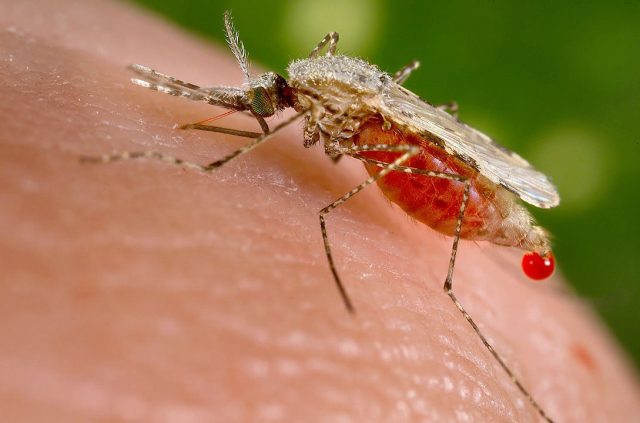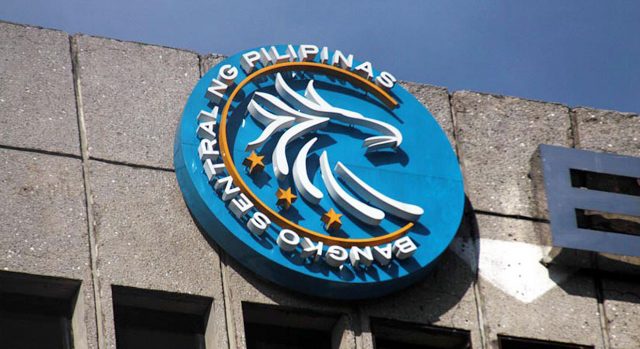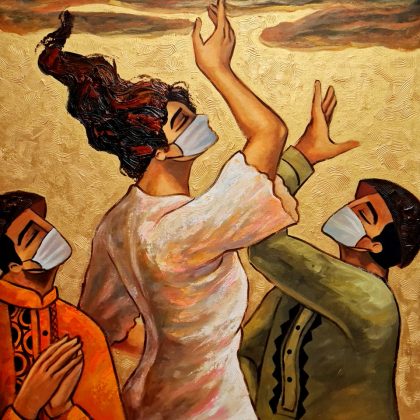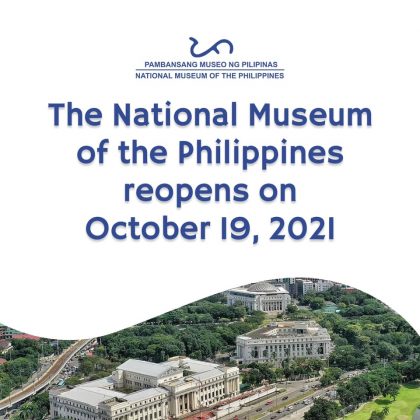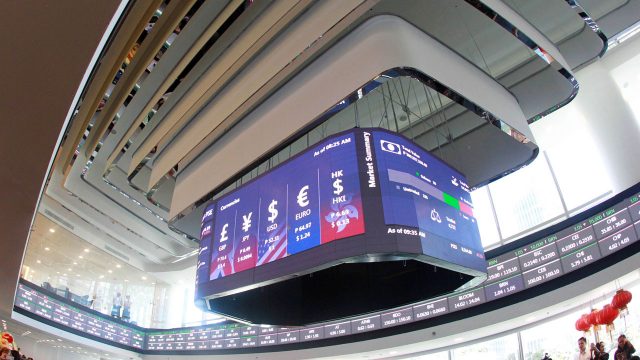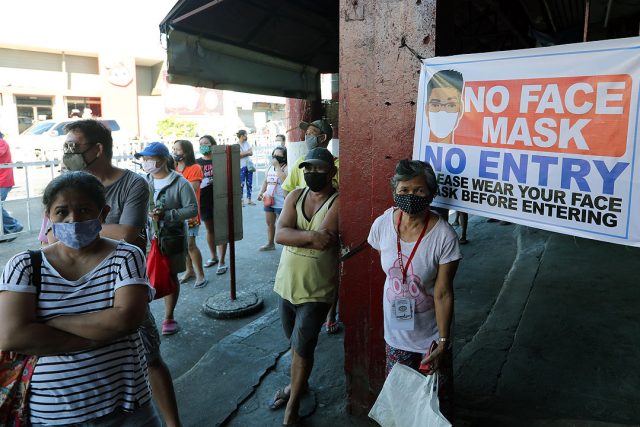Christian Brother holds exhibit of sketches
TODAY is the last chance to catch the exhibit of sketches by Br. Edmundo “Dodo” Fernandez FSC at the Tall Gallery of the Finale Art File. He is president of both the De La Salle-College of Saint Benilde and La Salle Green Hills, and is also an artist. The ongoing solo exhibit, entitled “Drawings: from residences in Japan and France,” features 21 sketches he created, ranging from emaciated bodies from the Holocaust to nautilus shells and houseflies.
Rizal Province artists exhibit at Robinsons Galleria
THIS OCTOBER, Robinsons Land’s ArtAblado hosts four artists who hail from the province of Rizal. The group calls itself B.R.A.D, which stands for their first names — Brando Limon Bati, Rico Aunzo (also known as Pedrong Masipag), Adler Llagas, and Daniel Dumaguit. Their works are on exhibit until Oct. 31 at ARTablado, at the 3rd Level of Robinsons Galleria. The exhibit, dubbed as “Bangon Ako, Ikaw, Tayo,” aims to inspire people to get up, work together and reach for their dreams. “This pandemic changed the way we live our lives. Some even lost their jobs or worst, their loved ones. Through this exhibit, we want to remind our fellow Filipinos that we a have a choice to get up and continue to live our lives,” said Rico Aunzo in a statement. For more updates, follow ARTablado on Facebook and @artablado on Instagram.
ManilArt goes on line and on site
MANILART 2021 will be held onsite and online from Oct. 20 to 24 at the SMX Convention Center, SM Aura Premier in Taguig City. Now on its 13th year, the art fair extends its reach through satellite sites outside Metro Manila. These include Balai Kalipay in Davao, Likhang Silangan in Rizal, Tarlac Art in Tarlac, and Ricardo’s in Cavite. ManilArt 2021 is also accessible online through https://www.manilartfair.com/ where guests can navigate a 360° walkthrough page and view works from 22 participating galleries. Tickets will be available through TicketBooth.ph and safety measures will be implemented in adherence to SM Aura Premier’s safety standards as monitored by Safecity Taguig.
The National Museum reopens
THE NATIONAL Museum of the Philippines has reopened to the public and is accepting fully vaccinated visitors, in a limited capacity. Visitors are required to reserve a slot online at least a day before the visit. To book a slot, visit the website www.nationalmuseum.gov.ph and click “Book a tour.” The museum is open Tuesdays to Sundays. The morning session is from 9 a.m. to noon with an entry cutoff at 11 a.m. The afternoon session is from 1 to 4 p.m. with an entry cutoff at 3 p.m. Visitors will be limited to 100 per session. For more information and details on guidelines, visit www.facebook.com/nationalmuseumofthephilippines/posts/4759307650760182.
PETA’s Under My Skin goes online
THE PHILIPPINE Educational Theater Association (PETA) brings back Rody Vera’s Under My Skin, an anthology drama on HIV directed by Melvin Lee. While the play’s run was cut abruptly because of the COVID-19 lockdown in March 2020, PETA has revamped the play from stage to video, in partnership with HIV advocacy organizations LoveYourself PH and The Red Whistle, and UNILAB, Inc. Under My Skin is inspired by real people and events, and it depicts the realities, triumphs, and struggles of people living with HIV, while navigating an important conversation about acceptance and tolerance. Their stories of love, pain, and acceptance are revealed through the character of Dr. Gemma Almonte, who is studying the spread of the devastating virus. The online streaming cast features Cherry Pie Picache, Eko Baquial, Gio Gahol, Mike Liwag, Jarred Jaicten, Kitsi Pagaspas, Dylan Ray Talon, Dudz Teraña, She Maala, Bene Manaois, Erold Enriquez, Jason Barcial, Joseph Madriaga, Rach Gimpes, Reggie Ondevilla, Roy Dahildahil, Gerard Dy, and Ekis Gimenez. Under My Skin Online runs from Nov. 26 to 28, and from Nov. 30 to Dec. 5. Tickets — P180 for Livestream, and P250 for Video on Demand — are available on www.ticket2me.net, bit.ly/undermyskinonline, or through any of the Under My Skin Online showbuyers. For bulk sales, and more sales information, contact Mitch Go at 0917-539-1112.
Virgin Labfest 16 goes online in November
THE CULTURAL Center of the Philippines (CCP), the Writer’s Bloc, and Tanghalang Pilipino (TP) host this year’s Virgin Labfest (VLF) online. Now on its 16th year, the festival will be streamed from Nov. 24 to Dec. 5 on the CCP, VLF, and TP Facebook pages. Choosing to focus on education, the festival components are FFF — Fair, Fellowship and Flashback. The Fellowship Writing Program will be conducted from Nov. 16 to Dec. 5 under the tutelage of award-winning playwright Glenn Sevilla Mas. The culminating activity, which will be streamed for public viewing on Dec. 5, will be directed by Dennis Marasigan. The Playwrights Fair will be held from Nov. 24 to Dec. 5 and feature conversations with playwrights from all over the country. As part of the Fair component, the 4th Edition of the VLF Anthology and Elemental, a book of plays by women playwrights, will be launched. For more information, follow VLF on CCP social media platforms, or visit www.culturalcenter.gov.ph.
Jackie Hontiveros Lozano holds exhibit
“MARIGOLD SUMMER,” an exhibit of works by Jackie Hontiveros Lozano, showcases 11 gouache paintings on paper and three oil paintings on canvas. The exhibit is a journey through the artist’s growth since her last shows, “Hero” (2018) and “Awakening” (2020). The themes deal with unburdening, duality, jagged lines, heavy strokes, and gray and neon, creation and ideation remain prevalent. For more details and to view the exhibit, visit ikajpaintings.com/marigold-summer/.
West Gallery opening 4 exhibits
WEST Gallery will open four exhibits on Oct. 21. They will run until Nov. 20. The exhibits are: Winner Jumalon’s “Nucleus,” Francis Bejar’s “Super Artist,” Lawrence Canto’s “As Days Go By,” and the group exhibit “C20H25N30” which features works by Edric Go, Bjorn Calleja, Geremy Samala, and Jigger Cruz. Gallery visitors must first make an appointment by calling 3411-0336 (landline) or 0915-175-3792 (mobile).
Met Museum holds webinar on community and architecture
THE METROPOLITAN Museum will hold a Zoom and Facebook Live webinar called “Beyond Mutual Support” on Oct. 23, 4-5:30 p.m. This webinar explores different approaches to community engagement in architectural practice and aims to conceptualize mutual support in relation to threads of ideas in history and architectural theory. The webinar is related to the exhibit “Structures Of Mutual Support,” the Philippine Pavilion exhibition at the 17th Venice Architecture Biennale. This exhibition, which opened in May, is curated by Framework Collaborative composed of Architects Sudarshan Khadka, Jr. and Alexander Eriksson Furunes together with members of Gawad Kalinga Enchanted Farm community in Angat, Bulacan. The webinar is a project of the musem, the National Commission for Culture and Arts, the Philippine Arts in Venice Biennale, and the office of Rep. Loren Legarda.
Virtual reality exhibit on Philippine forests
A GROUP of young up-and-coming artists in the Philippines want to use their art to bring the beauty of nature back into the minds of people via Project: KAGUBATAN. The project will stage an educational webinar series on Oct. 30 and Nov. 19 at 5 p.m., and a virtual forest exhibit on Nov. 10. Eight young Filipino artists — visual artist Issa Barte, photographer Javi Cang, photographer and multi-media artist Sara Erasmo, painter Chesleigh Nofiel, photographer Gab Mejia, photographer and filmmaker Angelo Mendoza, visual artist Kara Pangilinan, photographer and filmmaker Ivan Torres, and photographer Pau Villanueva — are collaborating on the project. Funds raised from the artworks will be donated to WWF-Philippines’ reforestation project in the Ipo Watershed with a target of 1,000 seedlings. The funds will also support the Bantay Gubat in the Ipo Watershed led by the Philippine Parks and Biodiversity and the Bantay Danaos of the Agusan Marshlands led by Youth Engaged in Wetlands. The virtual reality forest exhibit will allow audiences to immerse themselves in an environmental journey following a river that goes from lush mountain forests down through agroforests and eventually to wetland forests. It will showcase artworks by the artists showing forest landscapes, endemic flora and fauna, and people who depend on the forests. Webinars dubbed “Art for Conservation Conversation” will feature artists along with WWF-Philippines’ Forest for Water program manager Paolo Pagaduan. Learn more about the Ipo Watershed and WWF-Philippines’ Forest for Water program here: https://wwf.org.ph/what-we-do/water/ipo-watershed/.
Drive-in movies at MCAD
MCAD has converted its car park into a drive-in theater to screen selections of video works from the collections of four art institutions in the region. Curated in collaboration with the National Museum of Modern and Contemporary Art, Korea, in Seoul, the M+ West Kowloon Cultural District in Hong Kong, and MAIIAM Contemporary Art Museum in Chiang Mai, “Watch and Chill” aims to present a new approach to exploring and sharing art among museums, artists and viewers in the digital, contactless era. The featured works are divided into four sections “Things in My Living Room,” “By the Other Being,” “Community of Houses,” and “Meta-Home” all in connection to the reimagined role of “home” and lifestyle amid the coronavirus disease 2019 (COVID-19) pandemic. MCAD’s drive-in theater opens on Oct. 29 and will run until Dec. 5. Interested guests may pre-book a slot for the screenings through the MCAD website. The screenings will be held five times a week, from 6:30 to 8 pm. A maximum of six vehicles will be accommodated per screening. Vehicles will only be allowed to enter the parking lot 15 minutes before the screening. Visitors without vehicles who wish to view the films will be accommodated at a designated area in the venue. A maximum of 10 visitors without vehicles may be accommodated for each screening day. Sound for the films shall be transmitted through a commercially-unoccupied FM frequency that viewers can access through their car radios and other portable devices that can tune into FM. Pursuant to current guidelines from The Inter-Agency Task Force for the Management of Emerging Infectious Diseases (IATF), MCAD will be requiring guests to present their vaccination cards upon entry to the venue. Only fully vaccinated individuals will be allowed entry. The videos area also available to stream for free through the Watch and Chill online platform.
Tagum’s creative writers preserve memories
AS AN offshoot activity of the Tagum Creative Writers Summit held last August, Tagum’s first local government-initiated writers workshop kicked off on Sept. 29 at the City Library and Learning Commons of the Tagum City Historical and Cultural Center. The writers centered their works on Tagum, touching on culture and identity based on one’s memories and imagination. Polished pieces will be published in the literary folio of the Center, some of which will be interpreted both on stage and on canvas as part of the fringeTGM event in November this year. With the theme “Unleashing Creativity,” nine creative writers had their poems, short fiction, and one-act play critiqued and evaluated by each fellow writer and the panelists. Serving as panelists at the writers’ workshop were Palanca laureate Karlo Antonio David, Tagumenyo creative writer Reymond Pepito, and poet Ian Salvaña. The workshop fellows were Gabrielle Felio, Jeanevive Diva, Benjamin Caspillo, Marrion Rustell Helicame, Reyna Grace Tagalicod, Vissae Bel Agus, Floyd Bandalan, Shiela May Abucay, and Salvador Aquino.
Feminist Community Night marks 2nd anniversary
AS PART of its 2nd anniversary celebration, Time’s Up Ateneo (TUA) will be hosting a feminist community night called “Conspiring Against the Patriarchy” on Oct. 23, 8 to 9:30 p.m. via Zoom. There will be a kapihan, a feminist spin on Gartic Phone, and musical and poetry performances. Register via https://tinyurl.com/TUACap. Links will be sent to registrants a few days before the event. For the other activities that are part of TUA’s 2nd anniversary celebration, visit https://timesupateneo.org/2021/10/14/times-up-ateneo-2nd-anniversary-schedule-of-events/




